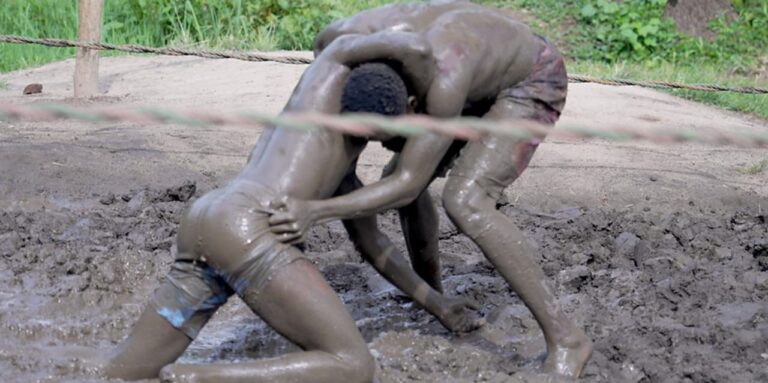By Dr Himanshu Pathak
Each year, the International Day for Biological Diversity invites us to reflect on the living fabric that sustains life—biodiversity. The 2025 theme, “Harmony with Nature and Sustainable Development,” underscores an increasingly urgent truth: sustainable development must go hand in hand with the preservation of nature.
Nowhere is this more apparent than in the world’s drylands. Covering 41% of the Earth’s land surface, these regions are home to over two billion people and support 50% of the world’s livestock and 44% of its cultivated systems (UNCCD). Far from being marginal, drylands are central to global food security, biodiversity, and climate resilience.
As climate change intensifies and population growth amplifies resource demands, these critical ecosystems face escalating threats. About 20-35% of drylands are already degraded, and up to 45% of Africa’s drylands are affected by desertification—a crisis eroding biodiversity, weakening traditional agricultural systems, and undermining livelihoods. Agricultural homogenization has also taken a heavy toll: the FAO estimates that 75% of crop diversity has been lost over the last century, as traditional varieties give way to genetically uniform crops.
Biodiversity in Drylands: A Foundation for Resilience
In dryland regions, biodiversity is not an abstract concept—it is survival. These lands, among the most severely affected by climate change, host a wealth of highly nutritious, underutilized crops, indigenous livestock breeds, traditional knowledge, and ecosystems honed by millennia of adaptation. Preserving this biological wealth is essential for dryland communities, but also for global sustainability.
The International Crops Research Institute for the Semi-Arid Tropics (ICRISAT), headquartered in India and operating across the drylands of Asia and sub-Saharan Africa, has been working in close collaboration with national and international partners for over five decades to advance agricultural development in harmony with ecological stewardship. One of ICRISAT’s earliest and most enduring commitments has been to the conservation of crop diversity.
Since the 1970s, the ICRISAT Genebank in Hyderabad has served as a global sanctuary for the wild and cultivated relatives of dryland crops such as sorghum, pearl millet, chickpea, pigeonpea, groundnut, and small millets. Today, as one of the 11 international Genebanks under the CGIAR, the ICRISAT Genebank is a multi-crop facility conserving six of the 25 major crops safeguarded by CGIAR Genebanks.
As a signatory to the International Treaty on Plant Genetic Resources for Food and Agriculture, ICRISAT has distributed nearly 1.5 million seed samples to researchers across more than 150 countries. A critical function of the Genebank is the repatriation of lost germplasm to countries whose national collections have been compromised by natural disasters, conflict, or other disruptions. To date, ICRISAT has restored over 55,000 accessions to 12 national programs across Asia and Africa, with South Korea being the most recent recipient.
Shared Heritage, Shared Responsibility
Preserving seeds in cold storage is only part of the picture, however.
True biodiversity conservation is dynamic—it lives in the hands of farmers and on the plates of consumers. It thrives when local communities in fragile environments are empowered to adapt to climate change. It flourishes with revived soils, and it nurtures life when sustainable water management ensures year-round availability to support both livelihoods and ecosystems.
This is why, at ICRISAT—with over five decades of experience in fragile ecosystems—our focus continues to be on smallholder farmers in the drylands. We champion resilient agriculture by reviving traditional crop varieties, reintroducing neglected and underutilized crops like small millets, and restoring degraded landscapes through sustainable practices in water conservation and soil management.
Reviving Traditional Crop Varieties
Dryland cereals such as sorghum and millets, once overlooked, are now gaining global attention. The Government of India’s declaration of 2021 as the National Year of Millets and the United Nations’ observance of 2023 as the International Year of Millets have helped spotlight their benefits. Recognized as Smart Food—food that is good for the consumer, the cultivator (farmer), and the climate (planet)—these cereals are not only rich in nutrients but also highly resilient to drought and heat.
Their resurgence is timely. According to the FAO, more than three billion people globally cannot afford a healthy diet, and micronutrient deficiencies remain widespread. Promoting these hardy crops through our Smart Food Initiative supports dietary diversity while building food systems that are more resilient to climate variability—a triple win for nutrition, climate adaptation, and biodiversity.
Reviving Degraded Landscapes
Restoring degraded landscapes is essential for ecosystem regeneration and biodiversity conservation. ICRISAT has demonstrated success across dryland regions of Asia and Africa by integrating landscape-level restoration with water conservation, sustainable soil management, and agroecosystem regeneration. Notable examples include our work in Bundelkhand and Latur, India; and the Yewol Watershed, Ethiopia—serving as compelling models of transformation.
These initiatives show that protecting biodiversity does not mean halting development—it means guiding it in a way that is regenerative, inclusive, and enduring. It means recognizing that healthy ecosystems underpin not only agriculture, but also human well-being and economic opportunity. These are not competing priorities—they are interdependent outcomes.
Looking Ahead: A Biodiverse Future
As the global community looks toward the future, the threats to biodiversity—climate change, habitat loss, soil degradation, and agricultural uniformity—continue to grow. But there is also cause for hope. The tools to halt biodiversity loss and restore ecosystems already exist—in science, in partnerships, and in the lived knowledge of communities that have long cultivated harmony with nature.
Conservation is not without challenges. It requires sustained investment, enabling policies, and often tough trade-offs. As we accelerate efforts to meet the 2030 Agenda for Sustainable Development, the moment for decisive action is now—by investing in nature-based solutions, supporting community-led conservation, and championing policies that place biodiversity at the heart of sustainable development.
On this International Day for Biological Diversity, let us remember that the path to a more resilient, equitable, and sustainable future begins with the choices we make every day—about what we cultivate, what we consume, and what we choose to conserve.
At ICRISAT, through our continued commitment to crop diversity, resilient food systems, and landscape restoration, we remain proud to walk alongside our partners in making choices that honor both people and the planet—especially the 2.1 billion who call the drylands home.
Harmony with nature is more than a theme. It is a responsibility we must embrace with urgency, purpose, and deep respect for the natural systems that sustain us all.
Dr Himanshu Pathak is Director General of ICRISAT






